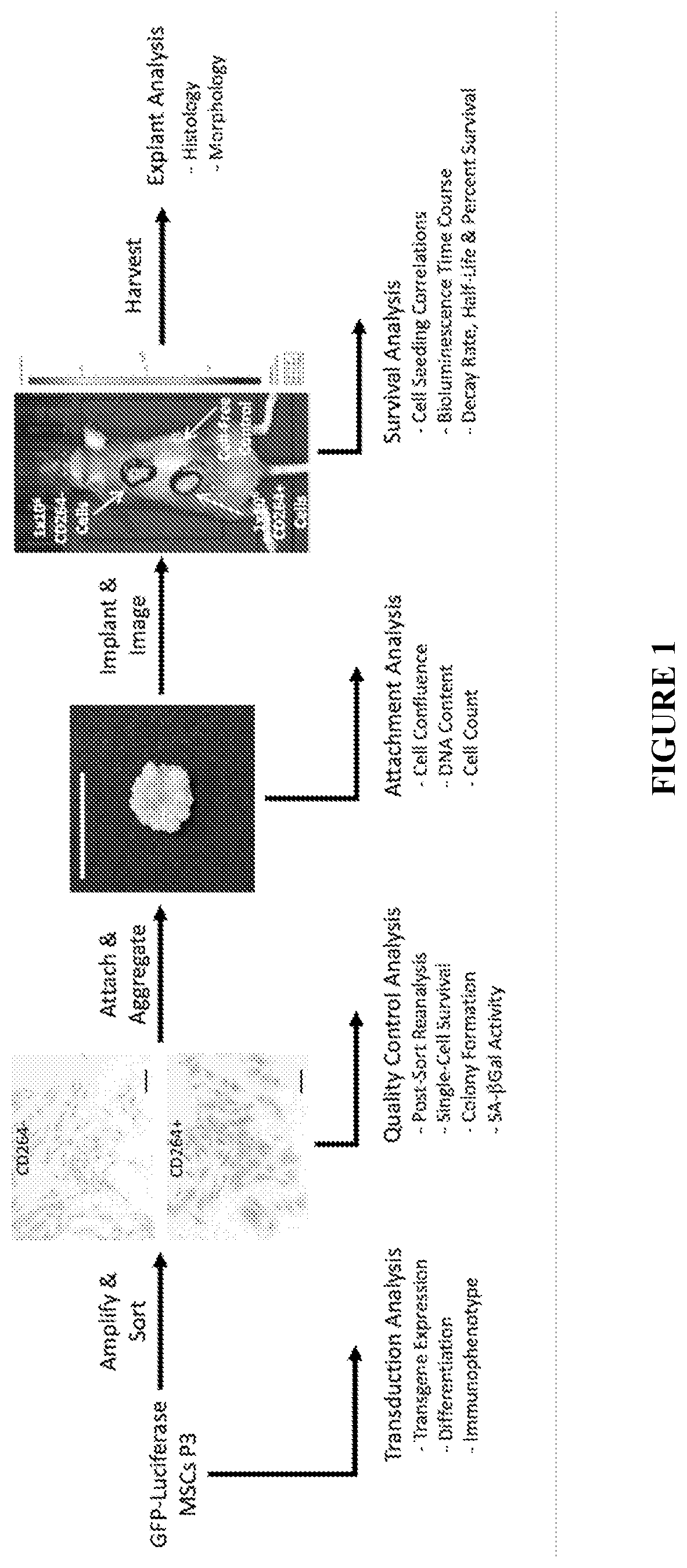Method of improving the in vivo survival of mesenchymal stem cells
a mesenchymal stem cell and in vivo survival technology, applied in the field of mesenchymal stem cell survival improvement methods, can solve the problems of reduced proliferation potential, reduced mscs regenerative properties, and reduced repair time of tissues like bones, so as to facilitate cellular ingrowth and proliferation
- Summary
- Abstract
- Description
- Claims
- Application Information
AI Technical Summary
Benefits of technology
Problems solved by technology
Method used
Image
Examples
Embodiment Construction
[0043]In the invention disclosed herein, a novel method of selecting MSCs capable of long in vivo survival and preparing an implant by attaching the MSCs on a scaffold, with optionally removing CD264+ cells in order to improve the therapeutic efficacy. These changes result in MSC half-life that is among the longest reported in the literature. The method of this disclosure is based on the surprise findings that (1) NG2 expression level is higher on the longer surviving MSCs in vivo, (2) CD264+, while a marker for senescent MSCs, does not negatively impact MSC survival in vivo, and (3) CD264+ cells are less therapeutically effective.
[0044]Prior to this disclosure, colony forming efficiency in cell culture is accepted as a measure of in vitro cell survival, and extrapolated as an indicator of in vivo cell survival. However, the inventors discovered that CD264+ and CD264− MSCs have comparable in vivo survival kinetics. Such results prompted the need for a new method of screening for lon...
PUM
| Property | Measurement | Unit |
|---|---|---|
| diameter | aaaaa | aaaaa |
| diameter | aaaaa | aaaaa |
| pore diameter | aaaaa | aaaaa |
Abstract
Description
Claims
Application Information
 Login to View More
Login to View More - R&D
- Intellectual Property
- Life Sciences
- Materials
- Tech Scout
- Unparalleled Data Quality
- Higher Quality Content
- 60% Fewer Hallucinations
Browse by: Latest US Patents, China's latest patents, Technical Efficacy Thesaurus, Application Domain, Technology Topic, Popular Technical Reports.
© 2025 PatSnap. All rights reserved.Legal|Privacy policy|Modern Slavery Act Transparency Statement|Sitemap|About US| Contact US: help@patsnap.com



